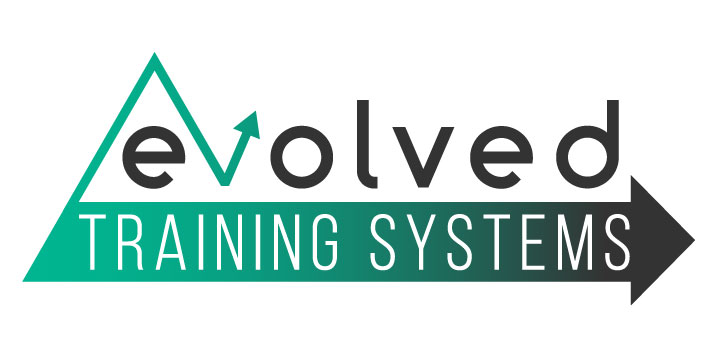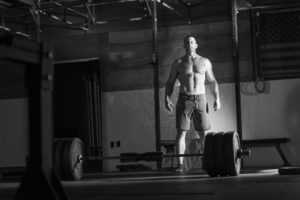In the winter of 2019/2020, just prior to the Pandemic, Evolved released its first POWERBUILDING cycle.
The response was overwhelmingly positive, as the concept of “Power Building” has been at the forefront of program design in the fitness space. Powerbuilding has become increasingly popular as athletes attempt to build strength, power and create hypertrophy simultaneously.
Programming Powerbuilding is actually quite nuanced, and must be programmed in a very specific manner to control overlapping fatigue while allowing both strength and hypertrophy to flourish.
The mastery exists in the ability to train lower reps without allowing the body to adapt ONLY to strength; and also provide sufficient volume across the musculature, to promote cell growth.
Getting stronger depends on neural adaptations (skill development), meaning you actually get BETTER at performing movements. It is not just lifting heavy weights for low reps and slamming an extra 5 lbs on the bar each week.
One of the key components of this training cycle is the use of a “top set” for strength lifts, followed by a number of lower-effort backoff sets to refine movement patterns without incurring excessive systemic fatigue.
If the fatigue from the strength work is too high, the body will use its resources to recover from this fatigue as opposed to responding positively to the hypertrophy work and sending resources towards manifesting new growth.
As an example of the structure, each week, many of the repeating movements will use a “single” rep as a primer before lowering the weight slightly for the work sets.
This is a popular practice in the strength world. It appears that the CNS (Central Nervous System) can use this heavier, but SUBMAXIMAL, effort to increase the effectiveness of your subsequent sets. It’s sort of the idea that if you feel something heavy, the actual work sets will feel subjectively lighter.
As the cycle progresses, these single reps will become heavier, until the final week, when you “test” that top single. These small “micro exposures” to doing singles each week should have a positive effect on your performance during testing week.
The slightly lighter “backoff” sets which follow the top single rep, may seem low effort, since you will have decreased the load from the top set. This is exactly the point, to hit a heavy set, signal the strength adaptations, and then follow it up with multiple sets that allow for perfect technique and enhance the performance of the exercise.
Once the strength signal has been sent, there’s no need to continue hammering it. At this point, it is most beneficial to move on to the lighter work.
I tend to program Power Building cycles with MUCH lighter work in the latter portion of the session. Instead of hanging out in the 8-12 Rep range with hard hypertrophy sets, I find that the signaling for growth (and recovery) seems to be better when the hypertrophy work is in the higher rep ranges and/or with lighter loading.
We can still use sets of 8-12 Reps, but it would be with super short rest and targeting approx a 15-20 RM type weight for the sets of 8-12 reps. This allows for the accumulation of metabolites, create a pump, shuttle nutrients to muscle cells, and limit total fatigue.
Per usual, the program will be arranged with 4 training days (plus the optional conditioning on Day 5).
The Original Daily program will have some fast paced “Metcon” type circuits included in many of the hypertrophy portions, while the Physique programs will work in the higher rep ranges with more supersets.
Let’s quickly delve into some SCIENCE around the benefit of strength phases.
Three Reasons for Strength Phases:
1. Strength phases provide you an opportunity to assess your progress at a much more tangible level. Yes, we can get stronger and set a “PR” in the 10-15 rep range, but being able to say “I set a PR in a 1, 2 or 3-rep max” is something we can hold with us as an emblem of our hard work and dedication. Not to mention, lifting heavy has a certain grit and determination associated that isn’t quite the same with higher rep ranges.
Ok, now onto some science 🙂
2. Re-sensitization to the “hypertrophy” stimulus is one major reason. The research behind this idea is building momentum, though I wouldn’t say it’s fact at this point. The idea is that our bodies are extremely resilient, and therefore adapt to a given stimulus, making it more difficult to continue to make progress without altering the stimulus temporarily.
A good analogy here would be what happens with continuous exposure to the sun. When the stimulus is new, we adapt quickly, and we can see skin changing to a darker color. As we do this more and more, we have to stay out in the sun longer to illicit an adaptation.
The sun exposure is much like training volume during a hypertrophy phase. Instead of having to do more and more, we can change stimulus temporarily and allow the body to “de-train” that stimulus slightly (avoid sun exposure), and then come back with a renewed ability to manifest these adaptations.
3. Potential HYPERTROPHY benefit of preceding a hypertrophy phase with a strength phase. There is a recent study by Carvalho and colleagues (https://pubmed.ncbi.nlm.nih.gov/33241958, 2020) which demonstrated exactly this idea.
One group did an 8-week hypertrophy phase while the other group did a 3-week strength phase, then a 5-week hypertrophy phase. The group that did the strength phase first, ended up with more hypertrophy. The reasoning for this is still ambiguous, in my opinion, and I may still argue that this is a result of “re-sensitization” more than “priming,” but it was proven effective either way!
—
Strength work and Proximity to Failure
Many studies are now showing that STRENGTH is increased faster staying further from failure.
The rationale is based around the idea that strength development is a result of total force production.
Force = Mass x Acceleration, so we want to keep the concentric speed faster (avoiding the grinding reps that slow); increasing the force applied.
In a recent study by Karsten and colleagues (https://pubmed.ncbi.nlm.nih.gov/31365457/), one group trained 4 sets of 10 Reps to failure, while the other group used the same weight (approx. 10-rep max), but completed 8 sets of 5 Reps (leaving 5 reps from failure each set).
The group that left 5 reps from failure had better strength gains! This has been confirmed in practice, among a wealth of top-level coaches, too!
—
This is a very unique cycle, and I am super excited for you guys to experience a different and challenging style of programming. As always, please feel free to ask questions, discuss concepts, and increase education around productive and sustainable training practices!




